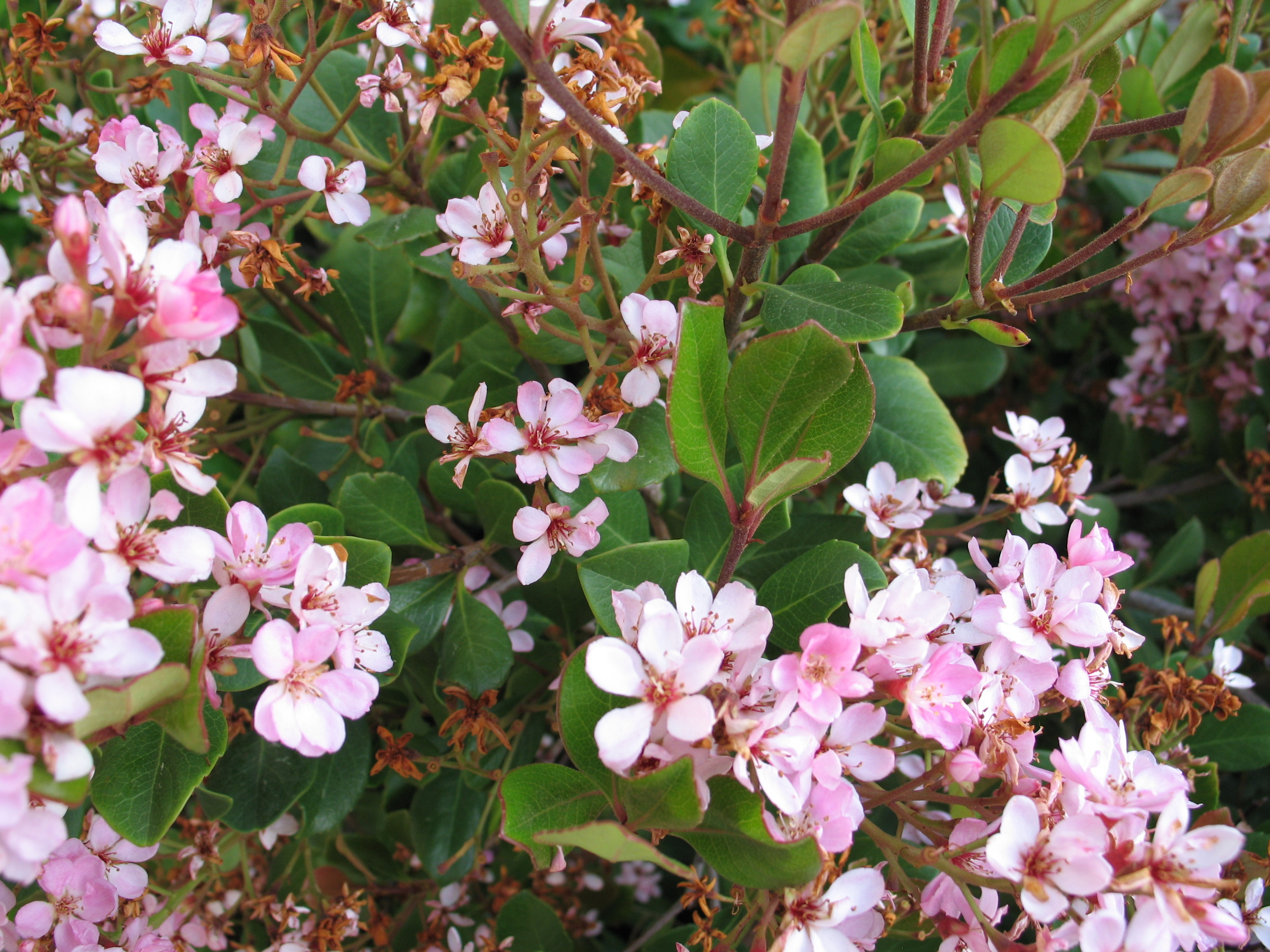- Rhaphiolepis
Taxobox
name = "Rhaphiolepis"

image_width = 240px
image_caption = "Rhaphiolepis indica" in flower
regnum =Plant ae
divisio = Magnoliophyta
classis =Magnoliopsida
ordo =Rosales
familia =Rosaceae
subfamilia =Maloideae
genus = "Rhaphiolepis" Lindl.
subdivision_ranks = Species
subdivision = About 15 species, including: "Rhaphiolepis ferruginea " "Rhaphiolepis fragrans " "Rhaphiolepis indica " "Rhaphiolepis integerrima " "Rhaphiolepis kerrii " "Rhaphiolepis lanceolata " "Rhaphiolepis major " "Rhaphiolepis salicifolia " "Rhaphiolepis umbellata ""Rhaphiolepis" (syn. "Raphiolepis"
Lindl. ) is a genus of about 15 species ofevergreen shrub s and smalltree s in the familyRosaceae , native to warm temperate and subtropical eastern and southeasternAsia , from southernJapan , southernKorea and southernChina south toThailand andVietnam . The genus is closely related to "Eriobotrya " (loquat s). The common name "hawthorn" (shared with the related genus "Crataegus ") is used for the species.The species vary in size, some only reaching 1-1.5 m, while "R. ferruginea" can reach 10 m. The leaves are alternate, leathery, glossy dark green, simple, 3-9 cm long, with an entire or serrated margin. The
flower s are white or pink, 1-2 cm diameter, produced in small to large corymbs. Thefruit is a smallpome 1-2 cm diameter, ripening dark purple to black, usually containing only a singleseed .Cultivation and uses
The best known species is "R. indica" (Indian Hawthorn) from southern China, grown for its decorative pink
flower s, and popular inbonsai culture. "R. umbellata" (Yeddo Hawthorn) from Japan and Korea has blunter leaves and white flowers. It is the hardiest species, tolerating temperatures down to about -15 °C.The fruit is edible when cooked, and can be used to make
jam .Indian Hawthorn is a mainstay horticultural specimen in southern United States. It is often found in commercial as well as in private landscapes. Often it is trimmed into small compact hedges or balls for foundation plants. It has been successfully pruned into a standard form as well as small dwarf-like trees up to 15 feet in height.
The use of "Rhaphiolepis" in landscapes in humid regions is often limited by the high susceptibility of many of the genus' species and hybrids to a disfiguring
leaf spot disease caused by fungi in the genus "Entomosporium".
Wikimedia Foundation. 2010.
